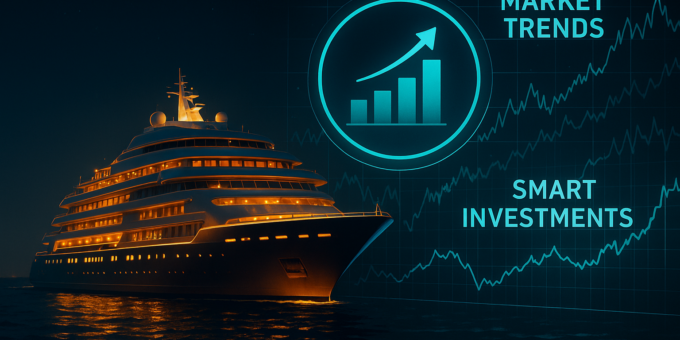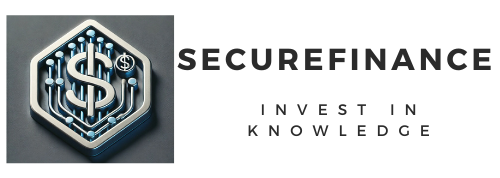
The global appetite for opulence afloat is surging like never before. Luxury ship market trends in 2025 showcase a sector brimming with innovation, prestige, and high-net-worth activity. From ultra-personalized mega-yachts to smart ship technologies and eco-forward builds, the industry is attracting the world’s wealthiest investors looking for high returns, exclusivity, and experiential luxury.
Why Luxury Ship Market Trends Are Booming in 2025
2025 isn’t just another year for the luxury maritime world. It marks a pivotal point where technology, environmental consciousness, and generational wealth combine to elevate the yachting industry. As global travel rebounds and the ultra-wealthy seek new investment playgrounds, luxury vessels have emerged as both symbols of prestige and savvy financial assets.
Wealth managers, family offices, and venture capitalists alike are turning to maritime luxury as a hedge against market volatility. With inflation-resistant valuations, lifestyle utility, and tax benefits, luxury ships are no longer just passion assets—they’re performing ones too.
Understanding the Global Luxury Ship Industry
Luxury ships come in various forms—superyachts, expedition yachts, mega cruisers, and hybrid models. The defining feature? Uncompromised comfort, advanced tech, and handcrafted customization.
This market has traditionally been the domain of Ultra High Net Worth Individuals (UHNWIs), but recent financial innovations such as fractional ownership and shared yacht experiences are democratizing access—at least to a degree.
Key Differences Between Luxury Yachts and Cruise Ships
While both sail the same waters, their function, design, and investment profiles diverge greatly. Yachts cater to private ownership and customization, while luxury cruise liners are often corporate investments, optimized for scale and service.
-
Yachts = bespoke, private, low capacity, high personalization.
-
Cruise Ships = commercial, scalable, hospitality-focused.
Each attracts a different class of investor, offering varied ROI potential and operational challenges.
Evolution of the Luxury Marine Segment
The luxury marine market has shifted from a status symbol into an experiential platform. Where once chrome and champagne defined value, today’s buyers want silent propulsion, AI-integrated crew tech, and carbon neutrality. This trend is backed by a generational change in values and increased ESG (Environmental, Social, Governance) accountability from high-net-worth families.
Demand Drivers Shaping Luxury Ship Market Trends
What’s causing such a tidal wave of interest in maritime luxury?
-
Surging Wealth: The global number of UHNWIs is projected to grow by 40% between 2021 and 2030.
-
Post-Pandemic Priorities: Privacy, mobility, and clean air are new luxuries.
-
Digital Transformation: Ship ownership and maintenance are now manageable via apps and AI dashboards.
-
Global Instability: Yachts offer geopolitical freedom—quite literally, you can sail away.
The Role of UHNWIs in Market Growth
These ultra-rich individuals are driving most of the capital flow. With personal wealth often exceeding $30 million, they’re commissioning vessels worth upwards of $500 million. But it’s not just purchase power—they influence trends, from interior aesthetics to green propulsion systems.
Geo-Economic Shifts Influencing Market Activity
China’s emerging elite, the Middle East’s wealth diversification, and Europe’s legacy manufacturers all paint a global picture of expansion. New marinas in Dubai, Saudi Arabia, and Southeast Asia reflect this spatial migration of money and influence.
Key Regulatory and Environmental Pressures
New IMO (International Maritime Organization) regulations are pushing for cleaner fuels and emissions caps. This has spurred a rise in electric yachts, LNG-powered cruisers, and shipbuilders adopting sustainable materials.
Investors now have to account for long-term environmental compliance—and those who do can unlock premium pricing and long-term value.
Why Smart Investors Are Flocking to the Luxury Ship Sector
It’s no longer just for oligarchs. Smart investors see luxury ships as:
-
Inflation-proof assets
-
Diversification vehicles
-
Lifestyle investments
-
Branding tools (for celebrities and CEOs)
-
Tax-efficient holdings via offshore registration
High ROI Maritime Segments to Watch
Certain categories within luxury marine offer better ROI:
-
Charter-Ready Yachts: High daily rates, low downtime.
-
Explorer Yachts: Built for adventure tourism, a growing trend.
-
Eco-Friendly Builds: ESG-aligned funds are taking note.
Fractional Yacht Ownership: A Disruptive Model
Platforms like SeaNet and The Yacht Company allow shared ownership with defined usage periods, concierge services, and resale flexibility. This model reduces entry barriers and attracts younger investors.
Charter Services vs. Private Ownership
While ownership offers status, chartering generates cash flow. Investors are balancing these options based on desired involvement and returns. Hybrid models are emerging where owners charter out during downtime, creating blended returns.
Futuristic Tech That’s Transforming Ships
From AI-run systems to digital twin simulations, the tech onboard ships now rivals Silicon Valley’s innovation hubs. We’re seeing:
-
Remote yacht management apps
-
Biometric security
-
Augmented Reality interfaces
-
Voice-controlled rooms
Sustainable and Green Yacht Design Trends
Sustainability is hot. And not just for optics. Yachts now boast:
-
Solar skins
-
Hydrogen fuel cells
-
Recycled teak interiors
-
Onboard water recyclers
These features add market value while slashing operational costs.
Smart Automation in Onboard Experiences
Touchless controls, AI-enabled crew assistants, and predictive maintenance systems are transforming the luxury experience from labor-intensive to effortless.
Top Shipbuilders Leading the Industry
The names shaping the waters:
-
Lürssen (Germany)
-
Benetti (Italy)
-
Feadship (Netherlands)
-
Heesen (Netherlands)
-
Damen Yachting (Netherlands)
Each offers varying specialties, from classic elegance to avant-garde futurism.
Notable Projects and Flagship Builds in 2025
Yachts like Project Y910, REV Ocean, and the ultra-secretive Somnio are redefining scale and purpose. Think floating research labs, eco-palaces, and private cruise liners.
Collaborations with Luxury Brands and Designers
Expect interiors crafted by Armani, Baccarat chandeliers, and Rolls-Royce-designed engine rooms. Luxury brands are increasingly seeing ships as blank canvases for brand storytelling.
Europe: The Classic Hub of Shipbuilding
From the Netherlands to Italy, Europe remains a production powerhouse. Skilled labor, historical craftsmanship, and regulatory stability keep buyers flocking.
Middle East: Where Mega-Yachts Rule the Waves
Dubai, Abu Dhabi, and now Saudi Arabia are not just buying yachts—they’re building ecosystems. From yacht-only resorts to private shipyards, it’s a region rewriting maritime luxury.
Asia-Pacific: Emerging Hotspot for Marine Wealth
Hong Kong, Singapore, and Hainan Island are witnessing a boom in yacht registrations. Local entrepreneurs and crypto-millionaires are fueling the rise.
North America: Rebound and Recalibration
While traditionally a charter market, North America is now seeing a resurgence in ownership, particularly from Silicon Valley and hedge fund circles.
Key Luxury Ship Market Trends for the Next 5 Years
-
ESG integration into design and operation
-
Private cruises as remote business hubs
-
Integrated crypto wallets for onboard spending
-
Submersible tenders and drone landing decks
Cryptocurrency and Blockchain in Yacht Transactions
Bitcoin-friendly deals are rising. Smart contracts enable transparent fractional ownership, while blockchain-based registries prevent fraud and streamline logistics.
Digital Twin Tech and Predictive Maintenance
Just as in aviation, ships are now mirrored by digital twins for performance analytics and failure prediction. This cuts down on surprise costs and increases asset longevity.
AI-Crewed Vessels and Smart Navigation Systems
No, robots aren’t serving champagne (yet), but AI handles navigation, weather routing, and guest preferences. Think of it as having a captain, concierge, and engineer rolled into one.
Risks Investors Should Consider Before Buying In
-
Volatile operational costs
-
Crew management complexities
-
Mooring limitations in elite marinas
-
Resale liquidity for ultra-custom builds
Maintenance and Operational Overheads
Annual upkeep can equal 10% of purchase value. Smart investors bake this into TCO (Total Cost of Ownership) models before committing.
Liquidity Challenges and Exit Strategies
Unlike stocks, yachts aren’t sold overnight. However, digital marketplaces, broker alliances, and fractional platforms are improving exit options.
New Generations, New Yachting Preferences
Millennials and Gen Z want more than marble and mahogany. They want purpose, flexibility, and sustainability. Builders are responding with modular, reconfigurable spaces and adventure-ready add-ons.
Luxury as Experience: The Experiential Economy
The ultra-rich no longer just want to own. They want to experience—with themed trips, underwater lounges, and onboard wellness spas taking center stage.
Multi-Generational Travel and Floating Villas
Yachts are being redesigned with intergenerational living in mind—quiet zones, nanny suites, and medical-grade air systems.
Cost of Building vs. Buying Pre-Owned Ships
New builds offer customization, but pre-owned vessels are faster to deploy. Each has pros and cons depending on the investment horizon.
Tax Havens and Offshore Ship Registrations
From the Cayman Islands to Malta, savvy investors structure ownership via offshore entities for tax efficiency, asset protection, and privacy.
Insurance and Compliance Considerations
Specialized marine insurance is vital, covering everything from piracy to hull breach. New regulations also require digital logs, emission records, and compliance audits.
What Yacht Brokers Say About 2025 Market Trends
Brokers report demand surges, low inventory, and quick closings—especially in Mediterranean and Asian waters. “It’s the tightest luxury supply chain we’ve seen,” says one broker.
Case Study: A Successful Ultra-Luxury Yacht Flip
In 2022, a family office bought a 140-ft yacht for $27M, upgraded tech and interiors, and flipped it for $42M in 18 months. Proof that timing and design matter.
Family Office Perspectives on Marine Investments
Multi-family offices are setting up marine verticals—dedicated to identifying, managing, and optimizing yacht portfolios as part of holistic wealth strategies.
FAQs
Is investing in a luxury ship profitable?
It can be, especially with charter income and capital appreciation on rare models.
How much does a superyacht cost in 2025?
Anywhere from $10 million to over $600 million, depending on size and features.
Are there taxes on yacht ownership?
Yes, but these can often be minimized with smart jurisdictional registration.
What is the average ROI on a charter yacht?
Between 7% and 12% annually, if managed professionally.
How do I insure a luxury yacht?
Through specialized marine insurers offering bespoke policies based on ship value and use.
Can yachts be used as business assets?
Yes, especially for high-end travel firms, corporate hospitality, and entertainment.
You Can Also Read : Luxury Ship Investments: Profiting from the World’s Most Lavish Vessels
Sailing Toward the Future
The winds of change in the luxury ship market are strong—and favorable. For investors with vision, patience, and a taste for the extraordinary, luxury vessels represent a powerful blend of prestige and profit. Whether as a floating asset or a charter powerhouse, the potential of this market has never been more seaworthy.
